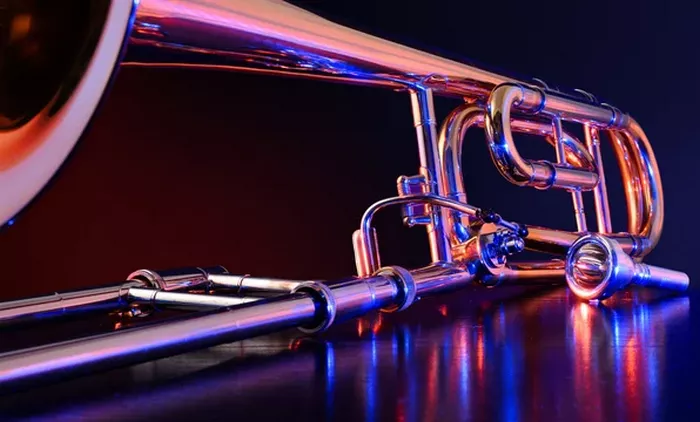The clarinet is a versatile woodwind instrument that has been cherished by musicians for centuries. Known for its rich, expressive tone and wide range, the clarinet has been an essential part of orchestras, bands, and solo performances. However, as with many woodwind instruments, the materials used in its construction play a significant role in the overall sound and playability. One of the most commonly used materials in clarinet manufacturing is ebonite, a type of hard rubber that has a longstanding presence in the world of woodwinds. This article will explore what an ebonite clarinet is, how it differs from other materials, and why it continues to be a popular choice for both beginner and professional clarinetists.
The Origins of Ebonite and Its Role in Instrument Construction
Ebonite, also known as vulcanite, is a type of hard rubber that was invented in the 19th century. It is created by adding sulfur to natural rubber, then heating the mixture under high pressure to create a durable and elastic material. Initially used in a wide range of industrial applications, ebonite found its way into the world of musical instruments due to its unique combination of properties, including its ability to mimic the acoustic qualities of wood.
The clarinet is typically made from wood, but early woodwind instruments were prone to damage, instability, and inconsistency in tone production due to their sensitivity to temperature and humidity changes. Ebonite was introduced as an alternative to wood for clarinets because of its durability, resilience, and ability to produce a similar sound quality. The introduction of ebonite was revolutionary in making clarinets more durable and easier to maintain, especially in different climates and conditions.
What Makes an Ebonite Clarinet Special?
An ebonite clarinet is a wind instrument constructed from ebonite, as opposed to the traditional grenadilla wood or plastic commonly used for entry-level instruments. The material is specifically chosen for its balance between durability and acoustic properties. Here are some of the features that make ebonite clarinets stand out:
1. Durability and Stability
One of the primary advantages of ebonite over traditional wood is its stability under varying environmental conditions. Wood, being a natural material, is highly sensitive to changes in temperature and humidity. A clarinet made from wood may warp, crack, or become unplayable if exposed to extreme moisture or dry conditions. Ebonite clarinets, on the other hand, are highly resistant to these environmental fluctuations, making them a reliable choice for players who perform in different climates.
2. Consistency in Sound Quality
Ebonite clarinets produce a sound that is highly consistent, regardless of external conditions. While wooden clarinets are susceptible to changes in tone as they age or are exposed to different environmental factors, ebonite instruments tend to maintain their sound characteristics over time. This consistency makes ebonite clarinets a popular choice among students and professionals who need an instrument they can rely on to perform at its best, no matter the conditions.
3. Tone and Playability
Ebonite clarinets are often described as having a sound that is similar to wooden clarinets but with a slightly brighter, more focused tone. While wood may offer a richer, darker sound due to its porous nature, ebonite provides a sound that is more direct and vibrant. The material also tends to be slightly lighter than wood, which can make ebonite clarinets easier to handle and play for extended periods. Many players appreciate the ability of ebonite clarinets to produce a clear, resonant sound, particularly in the upper registers.
4. Less Maintenance
Wooden clarinets require more careful maintenance to prevent cracking and warping. Regular oiling and proper storage in humidity-controlled environments are essential for their longevity. Ebonite clarinets, however, are much easier to care for. They do not require the same level of attention as wooden clarinets, making them an excellent option for beginners who may not yet be familiar with the nuances of woodwind maintenance.
Comparing Ebonite Clarinet to Other Materials
In addition to ebonite, clarinets can also be made from other materials, including grenadilla wood and plastic. Each material has its advantages and drawbacks, making it important to understand how ebonite compares to these alternatives.
1. Ebonite vs. Grenadilla Wood
Grenadilla wood, often referred to as African blackwood, is the traditional material used for professional clarinets. It is known for its dense, dark tone and the rich warmth it imparts to the sound. Many professional clarinetists prefer grenadilla wood for its unparalleled tonal richness, which can be more complex and nuanced than the tone produced by ebonite.
However, grenadilla wood comes with several drawbacks. It is highly sensitive to environmental changes and requires meticulous care to maintain its integrity. Wooden clarinets are also prone to cracking, especially in humid or dry conditions. Additionally, grenadilla wood can be quite expensive and difficult to source, making high-quality wooden clarinets a considerable investment.
Ebonite clarinets, on the other hand, offer a more affordable and low-maintenance alternative without sacrificing too much in terms of tone. While they may lack the deep warmth of a wooden clarinet, ebonite clarinets can still produce a clear, bright sound that is suitable for both beginners and intermediate players.
2. Ebonite vs. Plastic Clarinets
Plastic clarinets are primarily designed for beginners or educational purposes. They are durable, lightweight, and resistant to damage, which makes them ideal for younger players or for situations where the instrument may be exposed to rough handling. However, plastic clarinets typically do not offer the same level of tonal quality as either wood or ebonite instruments. The sound produced by plastic clarinets can be thin and less expressive compared to their ebonite or wooden counterparts.
Ebonite clarinets strike a balance between the affordability and durability of plastic clarinets and the tonal quality of wooden instruments. While they may not produce the rich tonal complexity of a grenadilla clarinet, they offer a brighter, more focused sound that many players find appealing. Ebonite clarinets are also more durable than wood, making them a reliable option for musicians looking for a stable and consistent instrument.
Why Choose an Ebonite Clarinet?
The decision to choose an ebonite clarinet depends on a variety of factors, including the player’s level of experience, budget, and personal preferences. Here are some reasons why a player might opt for an ebonite clarinet:
1. Affordable and Accessible
Ebonite clarinets are generally more affordable than high-quality wooden clarinets, making them an excellent choice for students or amateur players who are just starting out. While wooden clarinets can be prohibitively expensive, especially for beginners, ebonite clarinets provide a similar playing experience at a much lower cost.
2. Durability for Travel and Outdoor Performances
Ebonite clarinets are highly durable and resistant to environmental changes, which makes them a great option for musicians who frequently perform in outdoor settings or in varying weather conditions. Whether you are traveling with your instrument or playing in an outdoor concert, an ebonite clarinet can withstand the challenges that would otherwise damage a wooden instrument.
3. Reliable Performance
For intermediate players who require an instrument that offers consistent performance, ebonite clarinets are an excellent choice. The material’s resistance to cracking, warping, and other forms of damage ensures that the instrument will maintain its sound quality and playability over time. This makes ebonite clarinets ideal for musicians who need an instrument they can count on for reliable performance in a variety of settings.
4. Low Maintenance Requirements
Compared to wooden clarinets, ebonite clarinets require less maintenance. Wooden instruments require regular oiling, careful handling, and climate-controlled storage to prevent damage. Ebonite clarinets, however, are less susceptible to environmental damage and are easier to maintain, which can be a major advantage for players who don’t want to deal with the intricacies of wood care.
Conclusion
In conclusion, an ebonite clarinet is an excellent choice for musicians seeking a durable, reliable, and consistent instrument. With its resistance to environmental changes, ease of maintenance, and clear, bright tone, the ebonite clarinet is a great option for musicians of all levels. Whether you’re a beginner or an experienced player, the ebonite clarinet offers a balanced combination of performance and practicality that makes it a staple in the world of woodwind instruments.











